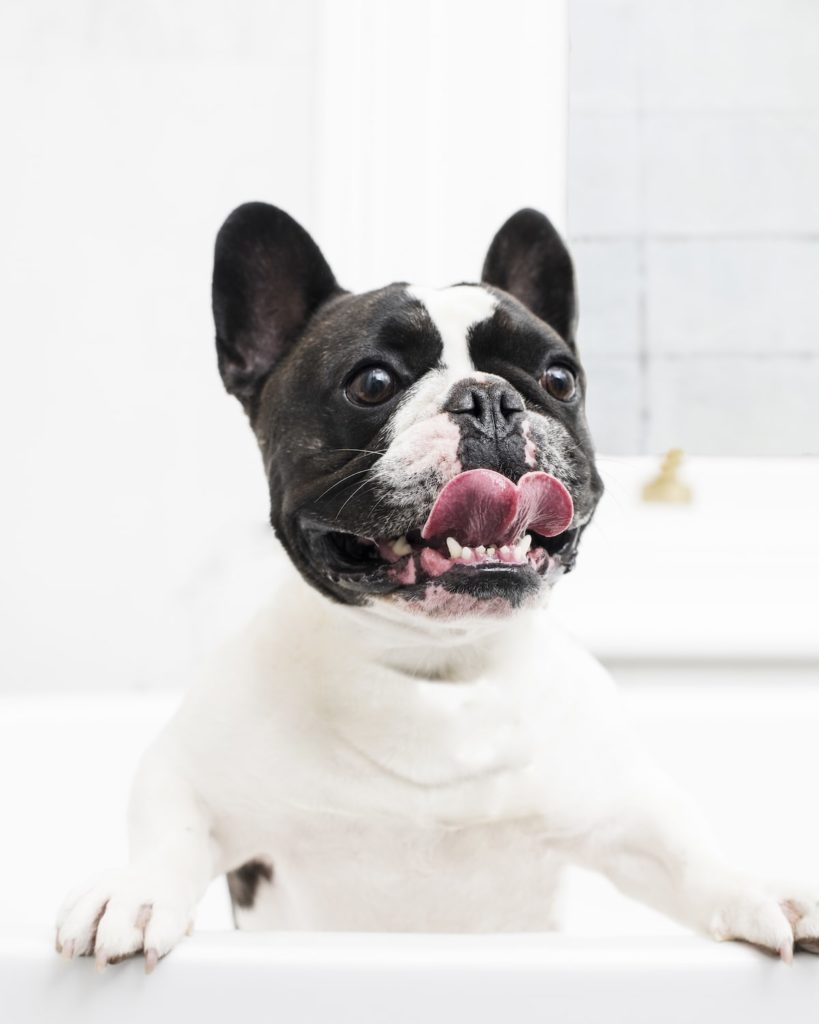What Ingredients Are Bad For Dogs Shampoo & Conditioner?
Houndztooth is all-natural, all the time
If it’s not safe for our own skin, we won’t put it on our pups, either. At Houndztooth, we believe in creating natural, quality pet products using rich Australian Botanicals and powerful, plant-based ingredients.
Our grooming range centres around your dog’s wellbeing as much as it does their skin, coat and overall health.
Because we care about our pets, we created a luxury range of natural dog shampoo formulated specifically for them, free from harmful and untrusted additives.

Pet shampoo & conditioner ingredients to watch out for
There are some ingredients used in many types of pet shampoo & conditioner today that can be harmful to your dog.
We follow a general rule of thumb when creating our products: if you wouldn’t want to put something on your own skin, you shouldn’t be putting it on your pups.
The following ingredients are a big no-no for your dogs, cats, and other pets – they’re not safe and they’re certainly not pet-friendly.
SLS
Sodium Lauryl Sulphate (SLS) is a chemical agent used for cleaning that binds ingredients together – predominantly, water and oils.
Because it’s cheap, abundant and good at doing what it’s meant to (binding ingredients together), a lot of companies use it in their cosmetic and dermatological products.
The danger of SLS is that it weakens the skin’s outermost layer, a barrier that is supposed to keep the bad stuff out.
Sustained use of SLS can cause irritation and harm, and often lead to allergic reactions.
EDTA
EthylenediamineTetraacetic Acid (EDTA) is similar to SLS in that it has binding properties. However, in the case of EDTA, it binds minerals and metals as opposed to water and oils.
The list of negative side effects associated with EDTA is long and worrisome. From anaemia and fatigue to low blood pressure and kidney damage, EDTA doesn’t have a good reputation with humans.
In dogs, it can cause toxicity and lead to abdominal pain and vomiting. EDTA is not something your pup should be ingesting or using as a topical.
Palm oil
Used in a plethora of everyday products, palm oil can be found in everything from lipstick to biscuits.
The problem with palm oil is that the demand for it makes it a highly profitable product, but also a very damaging one to the environment.
This demand is leading to the destruction of ancient rainforests and the eradication of unique wildlife as powerful conglomerates clear the way for mass production of the oil.
When it comes to pups, palm oil can have a laxative effect, causing sickness and dehydration.
Parabens
Parabens are synthetic preservatives used in a range of health & beauty products and are widely known as a potentially harmful chemical.
The main concern around parabens is that they have been linked to tumour growth, problems with reproductive organs and an increased risk of certain cancers.
Because they are cheap and effective – like SLS and Palm Oil – you can expect to see their continued use across a wide array of products. But you can trust that you will never find them in ours.
Artificial colours
Artificial colouring in pet shampoo & conditioner is 100% unnecessary. And quite ridiculous, when you think about it. Does your pooch care what colour their conditioner is? No. Then why should you?
The use of artificial colours in dog shampoo can cause allergic reactions and negatively influence your pet’s behaviour. Here’s an interesting article discussing artificial food dyes and pet food.
Synthetic fragrances
Similar to artificial colours, dogs don’t care for synthetic fragrances. If you have ever seen your pet’s reaction to a chemical-based floor cleaner or stain removal product, you’ve likely seen them disappear outside to escape the toxic smell.
So why include these fake fragrances in your pet’s product? It’s nothing more than a marketing ploy to encourage us, the human, to purchase a product – one that can actually be toxic to your dog if ingested or applied to their skin.

We use pet-friendly ingredients in our pet shampoo & conditioner
The ingredients we use in our pet shampoo & conditioner are all good and all-natural, all the time. You won’t find any of the above no-go ingredients in any of our products.
We believe in creating only sustainable, cruelty-free and pet-friendly products made with the highest quality, natural ingredients. And being the pet-loving people that we are, you can rest assured that none of our ingredients or products are tested on animals.
Why? Because we adore our pets and we believe they deserve the same level of nourishment and care that we give to ourselves.


